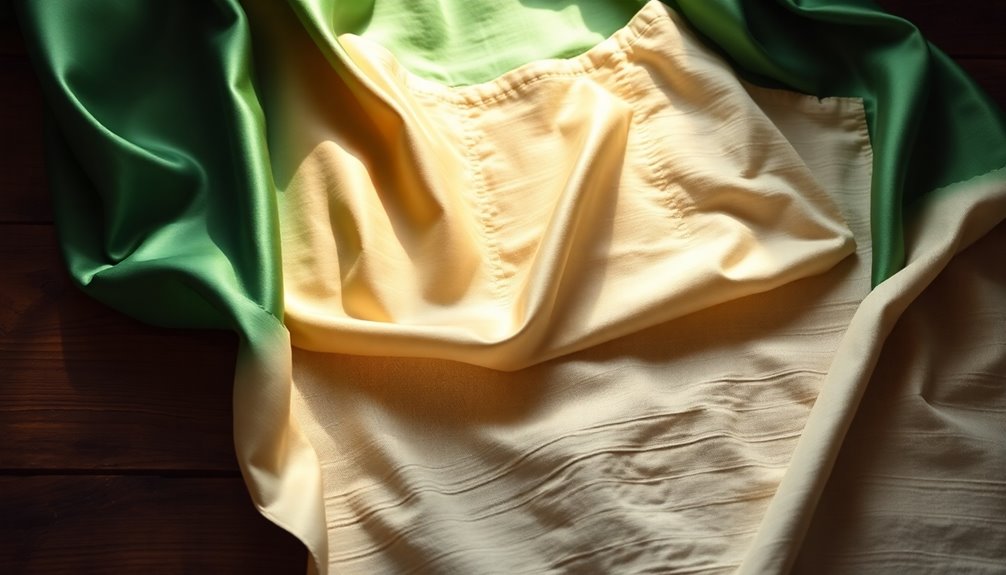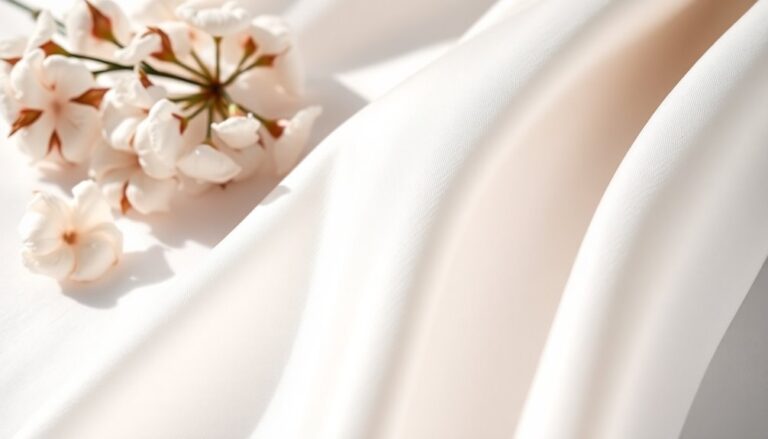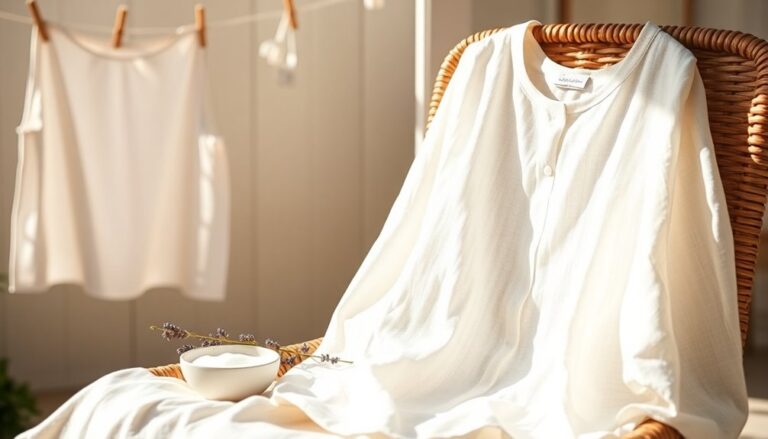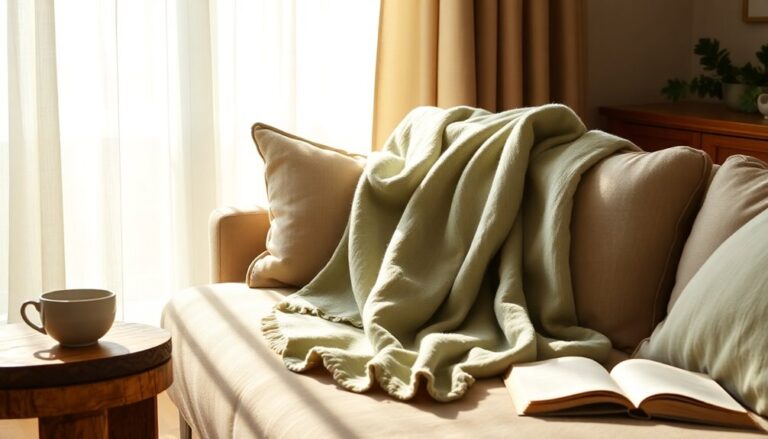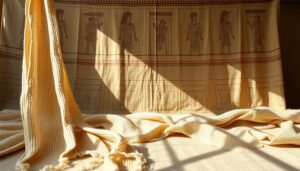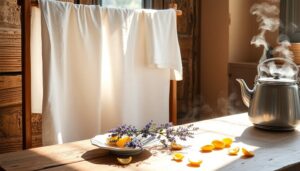When choosing between linen and silk, it boils down to personal preference and needs. Linen boasts breathability, durability, and a budget-friendly price, making it practical for everyday use. It's additionally easier to maintain than delicate silk, which offers luxurious softness and hypoallergenic qualities but often comes with a higher price tag. Those seeking comfort in hot climates might favor linen, whereas silk appeals to luxury lovers. For deeper insights into their unique advantages, exploring further can provide clarity.
Article Highlights
- Linen is more breathable and excels in temperature regulation, making it ideal for hot climates compared to silk.
- Silk offers a luxurious feel and elegant sheen but is generally more expensive and requires delicate care.
- Linen is more durable and stain-resistant, often lasting longer and requiring less maintenance than silk.
- For those with sensitive skin, linen's natural fibers are less likely to cause irritation compared to silk.
- Linen is a more budget-friendly option, providing better value over time due to its durability and availability.
Overview of Linen: Characteristics and Benefits
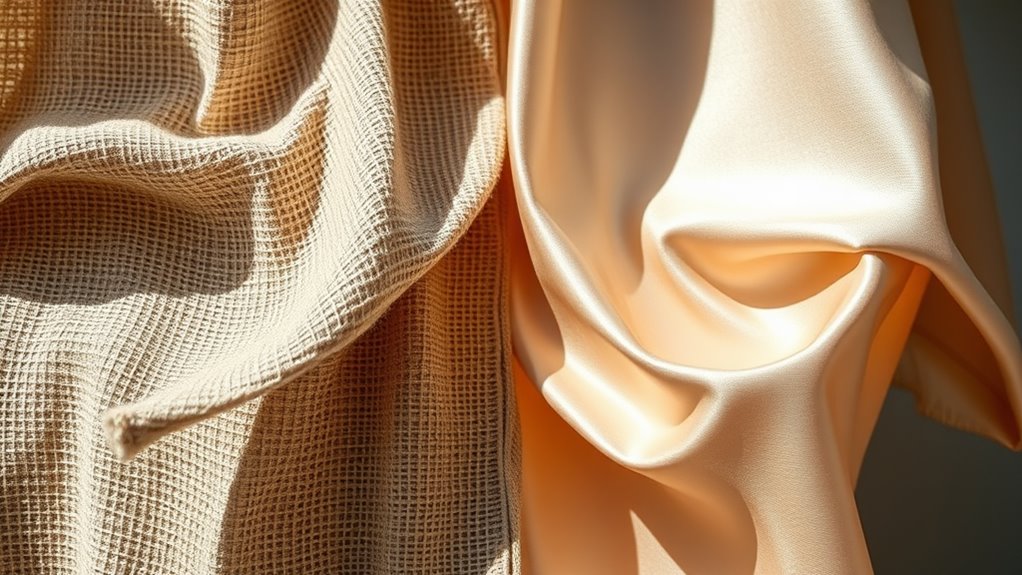
Linen, a timeless fabric, is celebrated for its unique characteristics and numerous benefits. Known for its breathability, linen keeps wearers cool in summer while providing warmth in cooler months. This versatility makes it a popular choice for various clothing and home textiles. Moreover, linen's sustainability improves its appeal; it's made from the flax plant, which requires less water and pesticides compared to cotton. This eco-friendly nature aligns with growing consumer demand for sustainable products. In addition, linen becomes softer with each wash, adding to its comfort and aesthetic charm. Its natural luster and texture contribute to the fabric's beauty, making linen not just practical but stylish for any occasion. Overall, linen stands out as an exceptional choice for conscious consumers.
Overview of Silk: Characteristics and Benefits
Silk, often regarded as the epitome of luxury, boasts a range of unique characteristics and benefits that make it highly desirable. Its production involves careful processes, primarily from silkworms, resulting in a soft, smooth texture that's unmatched by other fabrics. The luxurious feel of silk is not just about touch; it has an elegant sheen that improves its appeal in fashion and home decor. Furthermore, silk is naturally hypoallergenic, making it a great choice for those with sensitive skin. Its breathability allows for comfort in various climates, whereas its moisture-wicking properties help regulate temperature. Overall, silk stands out for its elegance, comfort, and versatility, solidifying its status as a favored fabric among discerning consumers.
Durability and Maintenance: Linen Vs Silk
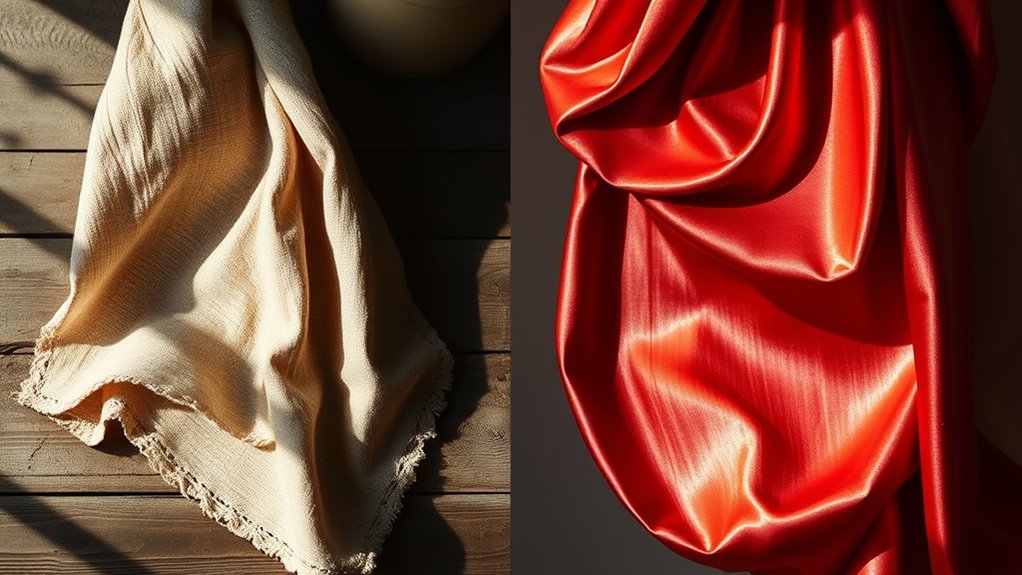
Although both fabrics offer distinct advantages, their durability and maintenance requirements differ considerably. Linen is known for its longevity factors, often lasting longer than silk with proper care. It's more resistant to wear and tear, making it a practical choice for everyday use. Conversely, silk requires more delicate handling to maintain its luster, which might deter some users.
When considering durability and maintenance, here are three key points:
- Washing: Linen can typically withstand machine washing, whereas silk often requires hand washing or dry cleaning.
- Stain Resistance: Linen is more stain-resistant than silk, making it easier to maintain.
- Fading: Silk may fade over time if exposed to sunlight, whereas linen holds its color better.
Understanding these care requirements can help in making a more informed choice.
Comfort and Breathability: Which Fabric Reigns Supreme?
Regarding comfort and breathability, these two fabrics offer unique experiences that cater to different preferences. Linen is renowned for its excellent temperature regulation, making it an ideal choice for hot and humid climates. Its loose weave allows for airflow, keeping the wearer cool. Conversely, silk provides a luxurious feel against the skin, but it may not be as effective in heat management. Although silk is known for its smooth texture, individuals with skin sensitivity might find linen's natural fibers more soothing, as they're less likely to cause irritation. Ultimately, the decision between linen and silk hinges on personal comfort, environmental conditions, and individual skin sensitivities, making it crucial to evaluate what works best for each person's lifestyle.
Cost and Accessibility: Evaluating Your Options
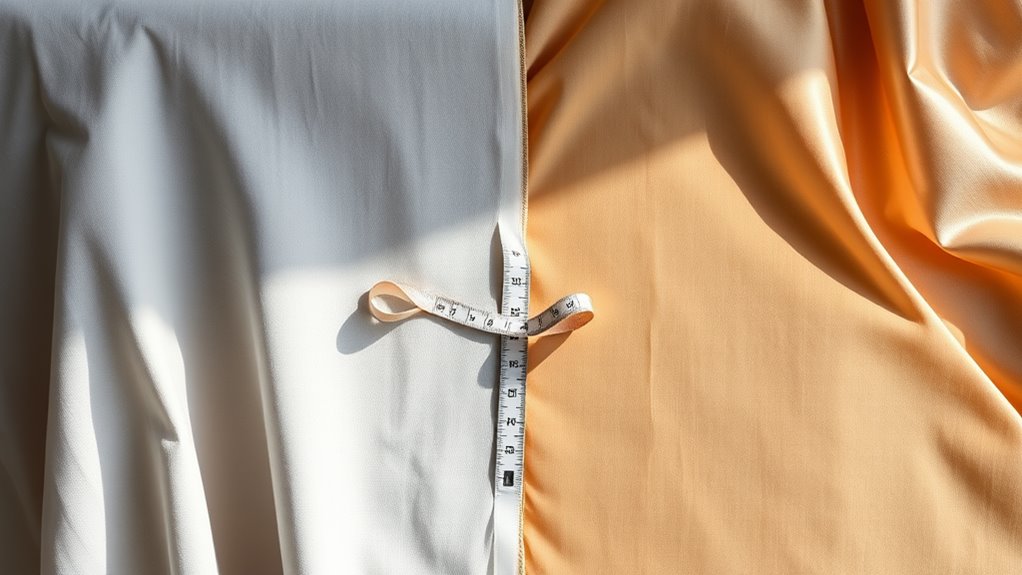
When evaluating cost and accessibility, consumers often find that linen typically offers a more budget-friendly option compared to silk. A price comparison reveals that although silk can be quite luxurious, it often comes with a hefty price tag. Linen, conversely, is not just more affordable but is also widely available. Here are three points to examine:
- Affordability: Linen's lower price makes it accessible to a broader audience.
- Fabric Availability: Linen is produced in larger quantities, making it easier to find in various styles and colors.
- Durability: Linen tends to last longer, providing better value over time.
Frequently Asked Questions
Can Linen Be Used for Formal Occasions Like Silk?
Many wonder if linen can be suitable for formal occasions, much like silk. Although silk's elegance often dominates formal attire, linen's versatility shouldn't be underestimated. It can be customized into sophisticated garments that exude a relaxed charm, making it a unique choice for summer events. Though it may not have the same luxurious feel as silk, linen can still make a stylish statement when styled appropriately, offering a revitalizing alternative for various formal settings.
How Do Linen and Silk Impact the Environment?
When considering how linen and silk impact the environment, one finds distinct differences. Linen often boasts sustainable production, as it's made from flax, a crop that requires fewer pesticides and water. Conversely, silk production can involve significant environmental costs, particularly in water use and land. Although both fabrics have their merits, linen typically presents a more eco-friendly option, reducing its overall environmental impact compared to silk's resource-intensive production methods.
What Are the Hypoallergenic Properties of Linen and Silk?
When exploring hypoallergenic properties, it's often believed that natural fibers are gentler for the skin. Linen's hypoallergenic benefits are notable; it's breathable and helps regulate moisture, making it suitable for sensitive skin. Conversely, silk's smooth texture reduces friction, which might likewise alleviate skin sensitivity. Both materials can be advantageous for those prone to allergies, offering comfort as they minimize irritation, though individual reactions may still vary.
Are There Any Blends of Linen and Silk Available?
When exploring the availability of linen silk blends, one finds a unique combination of fabric characteristics. These blends often provide the breathability and durability of linen alongside the luxurious feel and sheen of silk. This fusion results in a lightweight, comfortable fabric that's ideal for various applications, from clothing to home textiles. Many appreciate how these blends merge the best qualities of both materials, making them a popular choice for discerning consumers.
How Do Cultural Perceptions Differ Between Linen and Silk?
Cultural perceptions of textiles like linen and silk often reveal fascinating contrasts. Linen, with its rustic charm, carries cultural significance in various regions as a symbol of simplicity and tradition. Silk, in contrast, embodies luxury and elegance, often associated with wealth and status. These differing textile symbolisms reflect deeper values in societies, highlighting how people view comfort versus opulence, practicality versus extravagance, and everyday wear versus special occasions.





